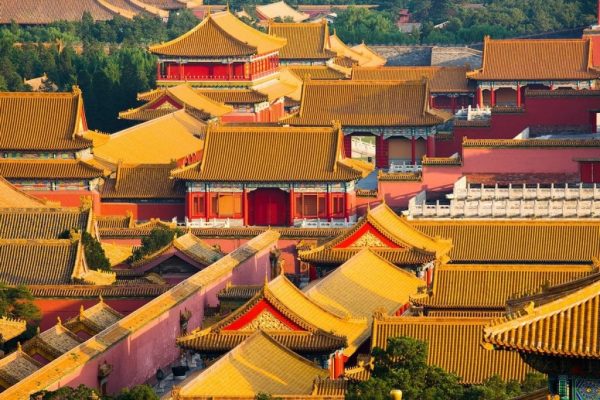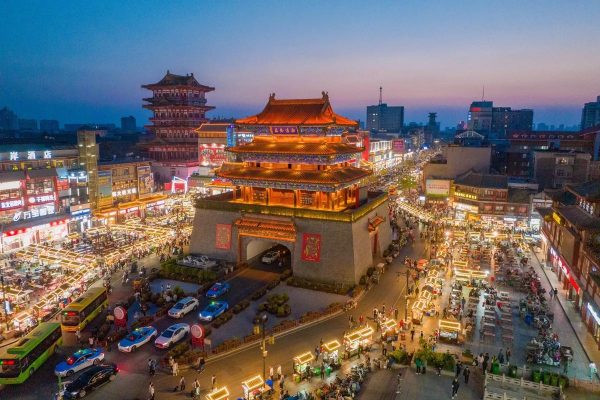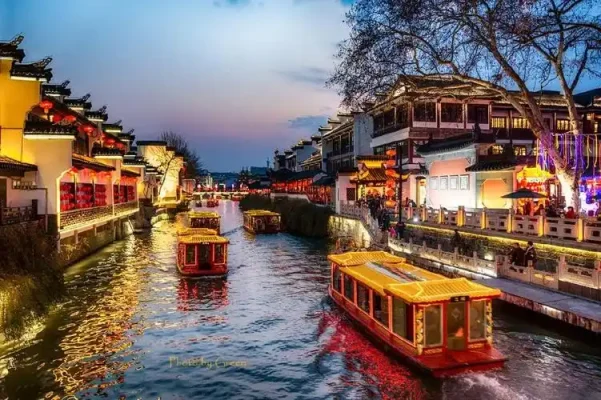As one of the oldest cities in China with a history spanning over 3,100 years, Xi’an stands as a living museum of ancient Chinese civilization. Once known as Chang’an, it served as the capital for 13 dynasties, including the mighty Han and Tang empires, leaving behind a wealth of historical relics and cultural treasures. Today, this vibrant metropolis seamlessly blends its rich past with modern energy, offering visitors a unique journey through time. This comprehensive guide will help you navigate Xi’an’s top attractions, savor its iconic cuisine, find the best accommodations, and make the most of your trip.
Must-See Historical Attractions
Terracotta Army
No trip to Xi’an is complete without a visit to the Terracotta Army, one of the most spectacular archaeological discoveries of the 20th century. Built over 2,200 years ago to guard Emperor Qin Shi Huang in the afterlife, this vast underground army consists of over 8,000 life-sized terracotta soldiers, horses, and chariots, each with unique facial features.
Located in Lintong District, about 35 kilometers east of downtown Xi’an, the site includes three main pits and a museum. Pit 1 is the largest, housing 6,000 soldiers arranged in battle formation, while Pits 2 and 3 display cavalry, archers, and command centers. Allow at least 3 hours to explore the entire complex, and consider hiring an English-speaking guide to gain deeper insights into the history and significance of the statues.
To avoid crowds, arrive early (it opens at 8:30 AM) or visit in the late afternoon. Combine your trip with a stop at Mount Li and the Mausoleum of Qin Shi Huang, located nearby.
Xi’an City Wall
The Xi’an City Wall is the best-preserved ancient city wall in China, dating back to the Ming Dynasty (1368–1644). Stretching 13.7 kilometers around the old city, it stands 12 meters high and 15–18 meters wide, with 98 watchtowers and four main gates.
Walking or cycling along the wall is a must-do activity. Rent a bicycle (available at each gate) for a 1–2 hour ride, enjoying panoramic views of the city—on one side, traditional courtyards and bell towers; on the other, modern skyscrapers. The most popular starting point is the South Gate (Yongning Gate), where you can also watch the elaborate “Ancient City Gate Ceremony” reenactment at 9:00 AM daily.
Visit during sunset for stunning golden light over the wall and the city below.
Big Wild Goose Pagoda
A symbol of Xi’an, the Big Wild Goose Pagoda was built in 652 AD during the Tang Dynasty to house Buddhist scriptures brought from India by the monk Xuanzang. This seven-story, 64-meter-tall pagoda is located in Da Ci’en Temple and is a masterpiece of ancient Chinese architecture.
Climb to the top of the pagoda for views of the surrounding Dayan Pagoda Square, which comes alive at night with a spectacular musical fountain show (8:30 PM in summer, 7:30 PM in winter). The temple grounds also feature beautiful gardens and halls with intricate Buddhist statues.
Don’t miss the Shaanxi History Museum nearby, which showcases over 370,000 artifacts from Xi’an’s 3,000-year history, including Tang Dynasty murals and bronze ware.
Muslim Quarter
For a taste of Xi’an’s multicultural heritage, head to the Muslim Quarter (Huimin Jie), a bustling neighborhood with over 1,300 years of history. Home to the city’s Hui Muslim community, it features narrow lanes lined with food stalls, traditional workshops, and the Great Mosque of Xi’an—one of the oldest and largest mosques in China, blending Islamic and Chinese architectural styles.
Wander through the streets to sample local snacks, watch craftsmen make noodles by hand, and visit the mosque (modest dress required). The quarter is especially lively in the evening, when the aroma of roasted lamb and spices fills the air.
Culinary Delights
Xi’an’s cuisine is a highlight of any visit, with flavors rooted in its role as a Silk Road hub. Here are the dishes you must try:
- Rougamo (Chinese Hamburger): A crispy bread bun stuffed with slow-cooked pork or beef, seasoned with cumin and chili. Look for street vendors near the City Wall.
- Yangrou Paomo: A hearty soup of crumbled flatbread simmered in lamb broth, served with pickled garlic and chili oil. Try it at the 100-year-old Laomendong Paomo restaurant.
- Biangbiang Noodles: Wide, chewy noodles tossed in a spicy sauce with garlic, soy, and vegetables. The character “biang” is one of the most complex in Chinese, and vendors often demonstrate noodle-pulling techniques.
- Jianbing: A savory breakfast crepe made with mung bean batter, eggs, scallions, and chili sauce, folded around a crispy cracker.
- Persimmon Cakes: Sweet, sticky pastries made from ripe persimmons and glutinous rice, a popular snack in autumn.
Accommodation
Xi’an offers accommodation options for every budget, from luxury hotels to budget hostels:
- Luxury: The Ritz-Carlton Xi’an is located in the heart of the city, steps from the Bell Tower, with elegant rooms and a spa. The W Xi’an offers modern design and a rooftop bar with city views.
- Mid-Range: Han Tang Inn near the South Gate blends traditional Chinese decor with comfortable amenities. Hampton by Hilton Xi’an Bell Tower provides convenient access to major attractions.
- Budget: City Wall Youth Hostel offers dorm beds and private rooms within walking distance of the City Wall, with a rooftop terrace. Bamboo Garden International Youth Hostel is popular with backpackers, featuring a courtyard and bike rentals.
Transportation
- Getting Around: Xi’an’s subway system is efficient and covers all major attractions, with 8 lines and counting. Purchase a Xi’an Transit Card for easy rides on subways and buses. Taxis are affordable but can get stuck in traffic during peak hours (7–9 AM, 5–7 PM).
- From the Airport: Xi’an Xianyang International Airport is 45 kilometers northwest of the city. Take the Airport Express Train (30 minutes to North Railway Station) or an airport bus (1 hour to downtown) for the cheapest options, or a taxi (40–60 minutes, ~¥100).
- Day Trips: For the Terracotta Army, take bus 306 from the East Gate or a high-speed train from Xi’an North Station to Lintong (15 minutes). To visit Huaqing Pool (a Tang Dynasty imperial hot spring) and Mount Li, combine it with your Terracotta Army trip.
Travel Tips
- Best Time to Visit: Spring (April–May) and autumn (September–October) offer mild weather, ideal for exploring. Summer can be hot (30–35°C), while winter is cold but less crowded.
- Language: English is limited outside major hotels and attractions, so download a translation app like WeChat Translate or Google Translate.
- Cash: While major hotels and restaurants accept cards, many street vendors and small shops prefer cash. ATMs are widely available.
- Respect Culture: When visiting temples or mosques, dress modestly (cover shoulders and knees). Ask permission before taking photos of locals.
- Safety: Xi’an is generally safe, but keep an eye on your belongings in crowded areas like the Muslim Quarter and subway.
Xi’an is more than a city—it’s a journey through China’s imperial past, where every street corner tells a story of emperors, traders, and scholars. Whether you’re marveling at the Terracotta Army, cycling the ancient City Wall, or savoring a bowl of paomo, Xi’an promises an unforgettable adventure that connects you to the heart of Chinese history.





